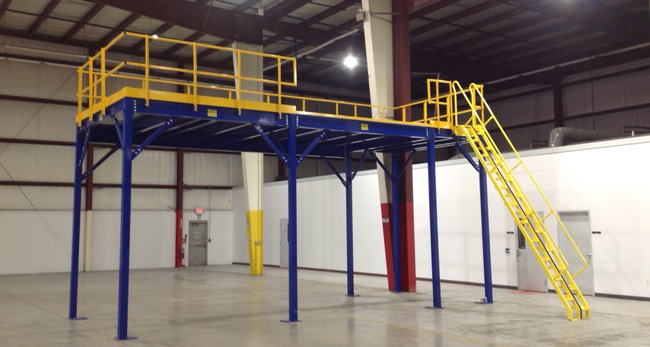What's the Difference Between a Live Load and a Dead Load

Engineers frequently encounter two such terms: "dead load" and "live load." Understanding the distinction between these loads is fundamental for ensuring the building and infrastructure's structural integrity and stability. Panel Built uses these terms to determine the design of our custom steel mezzanine systems.
Dead Load:
Dead load refers to a structure's static, non-moving weight or any permanent components that form an integral part of it. It primarily consists of the weight of the building materials and any fixed installations, such as walls, beams, columns, roofs, and flooring. Essentially, the dead load remains constant and does not change over time unless modifications are made to the structure.
Characteristics of Dead Load:
- Fixed weight: Dead load remains constant and does not fluctuate over time unless structural modifications occur.
- Permanent in nature: It comprises the weight of the building elements and components that form an inherent part of the structure.
- Vertical distribution: Dead load applies vertically downward due to the force of gravity, exerting a consistent pressure on the structural elements.
Examples of Dead Load:
- Self-weight of structural members (e.g., beams, columns, slabs, walls)
- Permanent fixtures (e.g., HVAC systems, plumbing, electrical wiring)
- Flooring materials (e.g., Advantech, tiles, wooden planks)
- Roofs and roof coverings
- Building finishes (e.g., plaster, paint, cladding)
Live Load:
Unlike dead load, live load refers to the transient or moving loads that structures experience due to human occupancy, furniture, vehicles, and other temporary factors. Live loads vary in magnitude and location over time, as the intended use and occupancy of the structure influences them. Since live loads are not constant, they impose dynamic forces on the structure, which engineers must consider for safety and design purposes.
Characteristics of Live Load:
- Variable magnitude: Live load values change based on the occupancy and usage of the structure. For instance, a residential floor experiences different loads than a commercial floor.
- Temporary in nature: Live loads are not permanently fixed and can change over time as occupants and their activities fluctuate.
- Dynamic distribution: Live loads can apply in different locations and move within the structure, leading to variable forces acting on the structural elements.
Examples of Live Load:
- Occupants and furniture in residential and commercial buildings
- Vehicles on bridges, parking decks, and roadways
- Storage and inventory in warehouses
- Machinery and equipment in industrial facilities
- Snow accumulation on roofs during winter
Distinguishing Factors:
- Nature: Dead load consists of permanent, static weights, while live load encompasses transient, variable loads.
- Magnitude: Dead load is typically higher than live load as it includes the weight of the structure itself, whereas live load accounts for temporary loads imposed on the structure.
- Time Dependency: Dead load remains constant, while live load can change depending on the occupancy and activities occurring within the structure.
Design Considerations:
Structural engineers consider dead and live loads when designing mezzanines to ensure safety and prevent structural failure. Dead loads determine the overall strength and stability requirements, while live loads influence the design for anticipated usage scenarios. Appropriate safety factors are incorporated into the design process to account for uncertainties and variations in live loads.
In summary, dead load and live load are crucial concepts in structural engineering. Dead load refers to the permanent weight of a structure and its components, while live load represents the variable, transient loads imposed by occupancy.
Ready to maximize your space with a durable steel mezzanine? Contact Panel Built today to design the perfect solution for your facility!
Request a Quote
